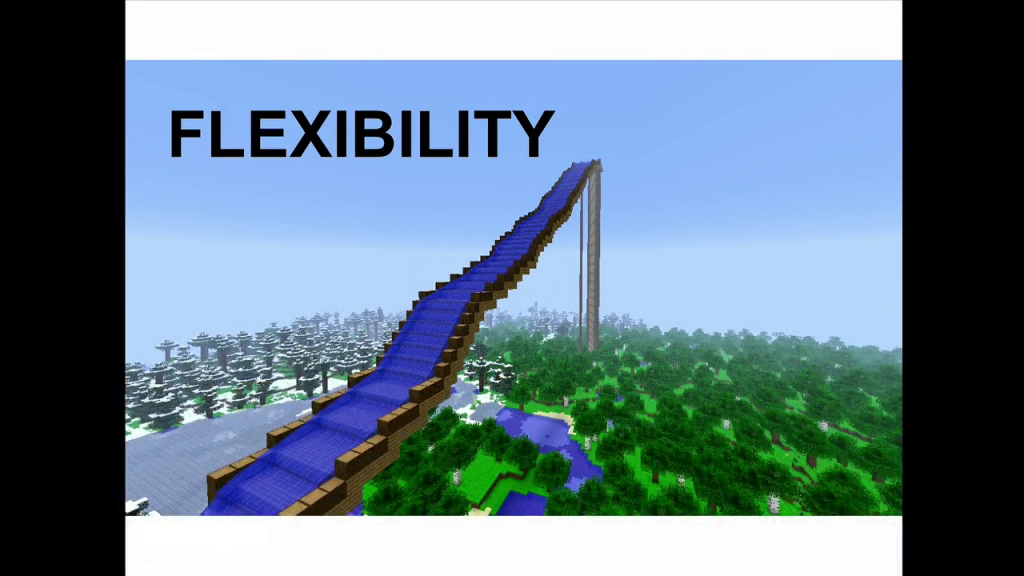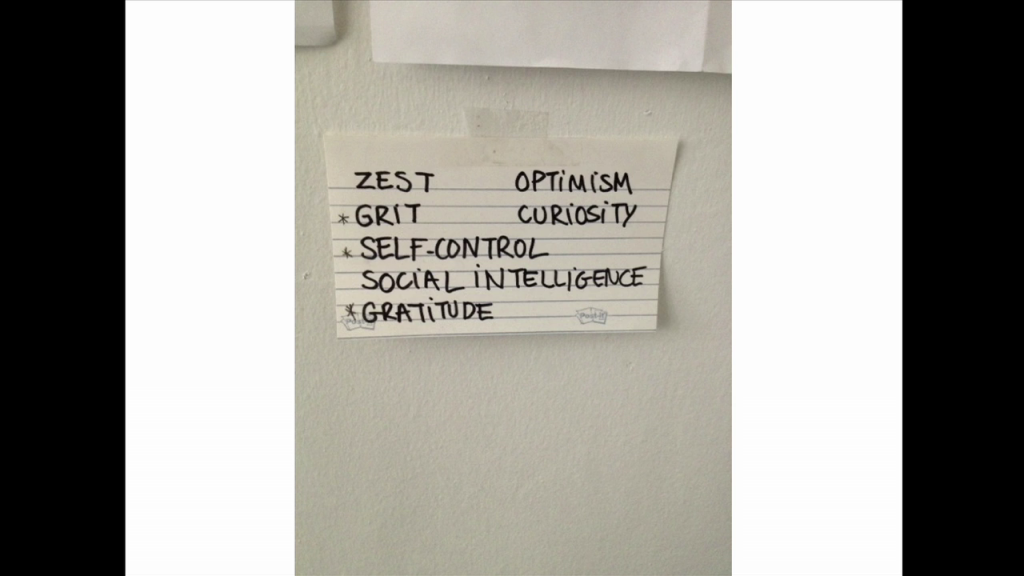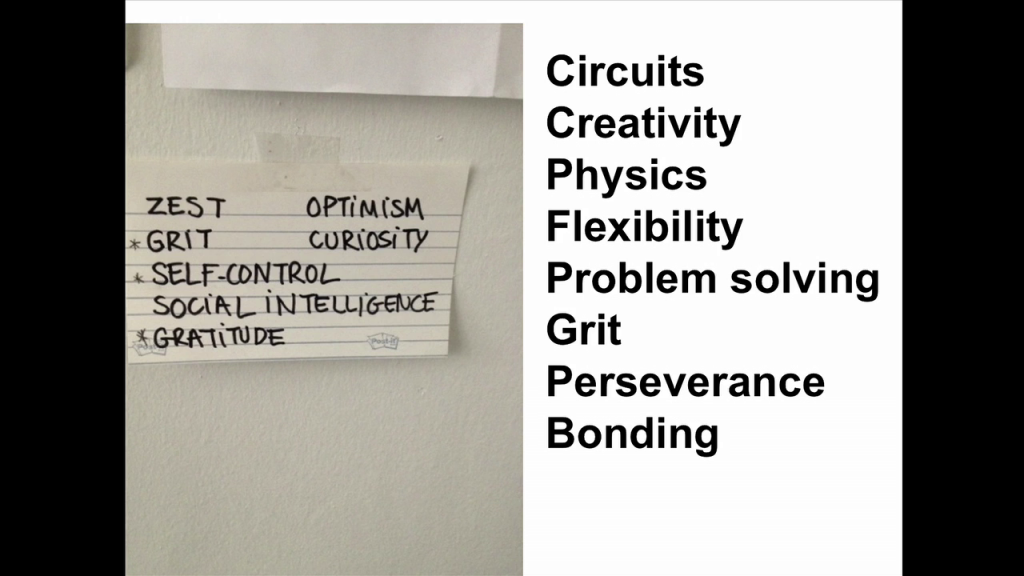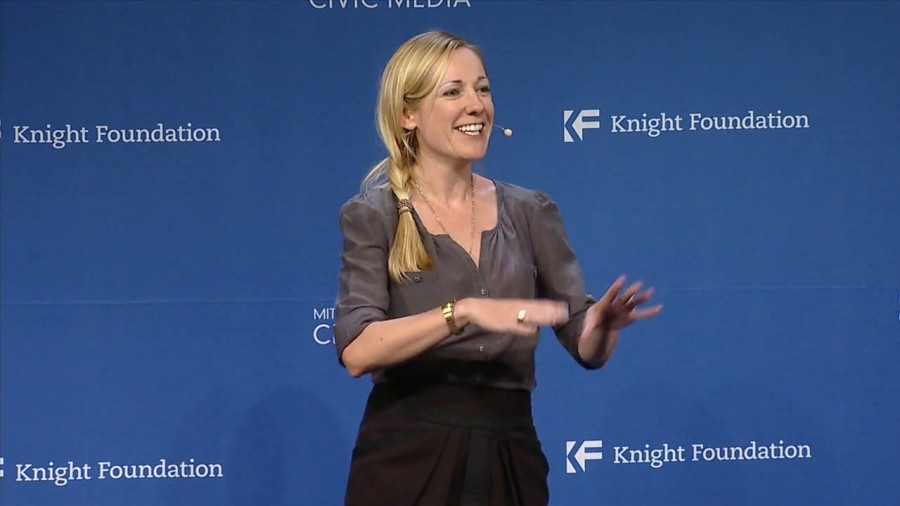Today I want to talk to you about how you too can social engineer your child through Minecraft. First off, this is not a presentation for any kind of parents. There are some parents that are not going to be interested in this, for instance if you want your child to be happy and you’re fine with that. Or if you’re fine with your child becoming an artist, or operating a B&B in Maine. This is not a presentation for you. I’m looking for tiger mothers and tiger fathers.

This is the child in question. She’s 9. You can see her involved in some uneducational, non-productive activity, and I’m not going to allow this to continue. Thankfully, she loves Minecraft, and that’s great. This is how Minecraft starts:

You are dropped into a world with nothing except your hand; that’s your hand on the side there. You find a tree and you chop it up, you make planks of wood and sticks. With that you make pickaxes, you mine for rocks, you build houses. Sometimes you fight zombies, but mostly you build houses.
So it’s not surprising that when I ask my daughter what she thinks she’s learning from Minecraft she says, “Hmm, wood is important?” But of course there’s much more to learn from this game that doesn’t really have a goal. But there’s real knowledge to be gained from Minecraft. For instance there’s something called redstone in Minecraft that stands for electricity. You can actually build circuits.

It also obviously fosters creativity. For instance, if you want to decorate your house with a pit of severed heads, like my daughter did, you can. It’s possible.

Minecraft also fosters flexibility. This is a study done in Sweden about how kids that play with Minecraft are very apt to scratch their plans when they discover new resources or new tricks in the world. For instance, these kids wanted to build a village, but they changed their plans when they discovered that they could carry water in buckets, and instead they did a water slide.
But creativity and flexibility are low-hanging fruits, educationally. These are the character traits that I want my daughter to have. These are the traits that the KIPP schools say lead to success:

So does Minecraft help me with this? For instance, there’s a problem of the treehouse. My daughter builds giant houses on top of tiny little trees, and she knows enough physics to know it’s not possible in real life. So what’s the point? I called Katie Salen, and I asked her that. She said it does seem that building impossible architecture would be a waste of time. But what really happens is that when the kid then goes out in the street, finds a tree, will look at the tree and start asking questions like, “Could I put a house on that tree? Why not? What would I need to change to actually make it happen?” And that puts the kid into a mindset of problem-solving, and that’s really valuable.
But there’s another thing that I wanted to teach my kid through Minecraft, and it’s to be brave. It says on the web site “brave players.” But when she plays in Minecraft, my daughter is very risk-averse. She avoids any kind of [inaudible]. She doesn’t fight the zombies. So I asked Katie, because I had her on the phone, and she said bravery really is grit and perseverance. And you can cultivate that by setting yourself challenges and achieving them, then sharing the results on a platform like DIY to get peer feedback, or parent feedback. That’s really important because that’s your reward, and the kid will be more amenable to taking risks if there’s a reward. That’s my favorite part of Minecraft, that we talk a lot about what’s going on inside her Minecraft world, and we research ways to do things together on YouTube, and we bond over it.

So these are the things that Minecraft can teach, and it’s not really that much different from my original list. And it’s not so bad for a simple video game. So now the only thing that I have to worry about is how to handle the pit of severed heads.
Thank you.
